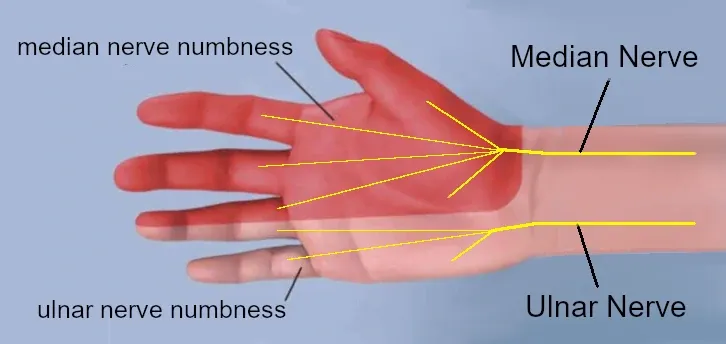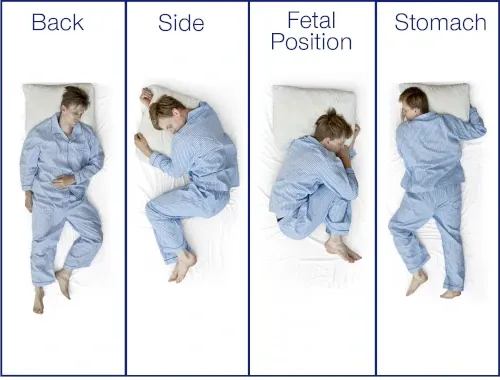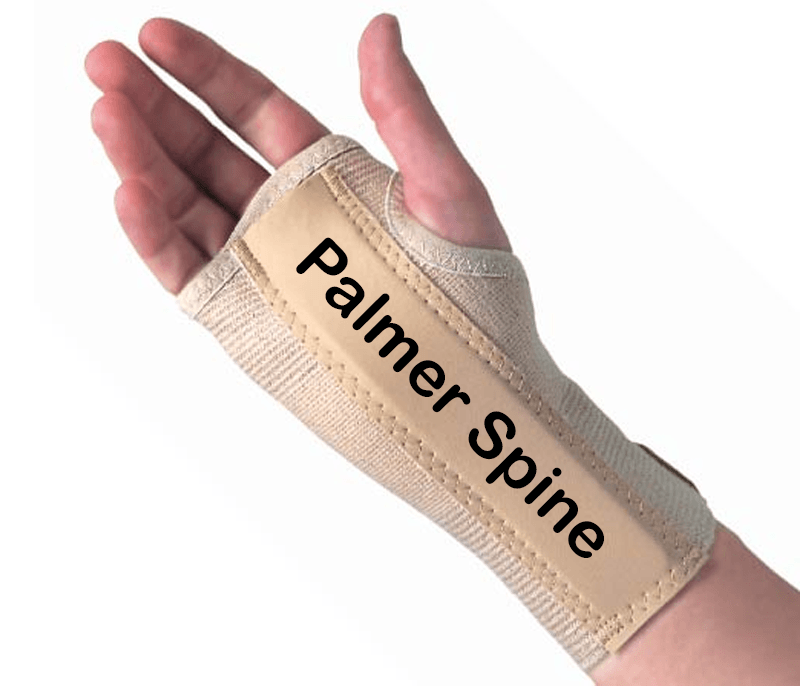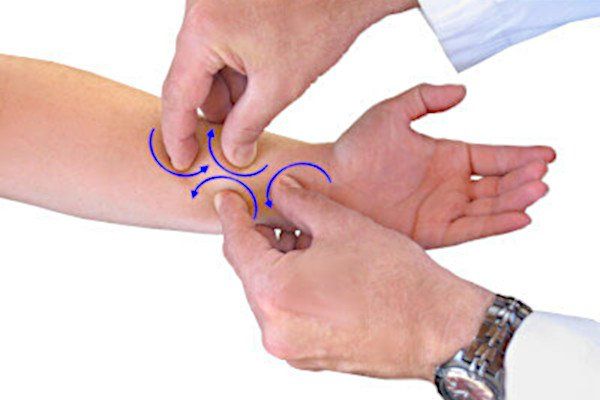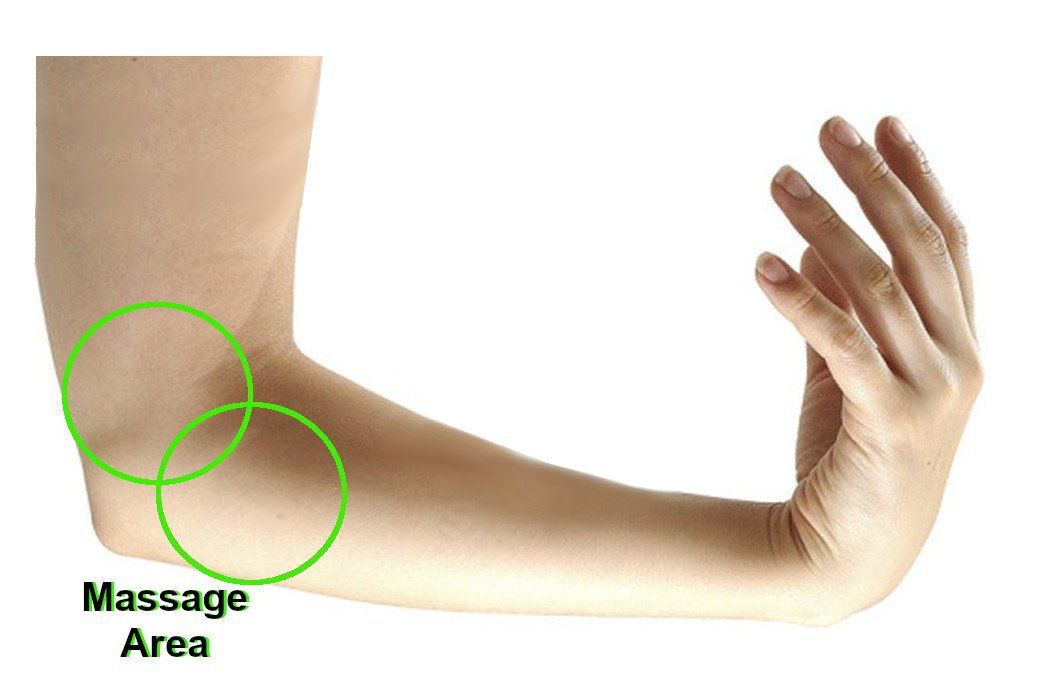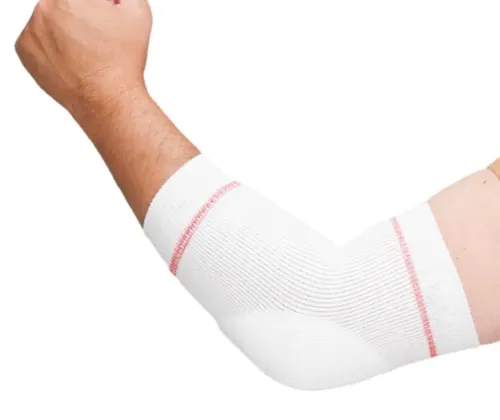3 Common Causes of Finger Numbness
Table of Contents
Overview
All finger numbness is due to nerve damage
- Finger numbness caused by
carpal tunnel syndrome
- Risks for getting carpal tunnel syndrome
- Jobs most associated with carpal tunnel syndrome
- Finger numbness caused by
cubital tunnel syndrome
- Finger numbness caused by
your sleeping position
- Head-cradling
- Bent wrist
- Elbow pressing
Remedies for finger numbness
- How to treat finger numbness due to carpal tunnel syndrome
- Night bracing
- Rest
- Stretching exercises
2. How to treat finger numbness due to cubital tunnel syndrome
- Adjust sleeping position
- Use NSAID medicines
- Nerve gliding exercises
- Elbow massage
3. How to treat finger numbness due to sleeping position
- Use an elbow guard
- Nocturnal bracing
- Sleep training
Summary
FAQs
About
Overview
It's completely normal to have
occasional and temporary
finger numbness. But if it's sudden, it means it could be an emergency situation, like having a stroke.
If so, call your doctor immediately.
(See warning signs of stroke here.)
However, most cases of finger numbness usually are not an emergency. It's probably a sign there's an issue with one of the nerves in your hand or fingers.
Nearly everyone will feel numbness in their fingers at some point in their lives. And they can generally trace the numbness back to a recent trauma. The trauma could be as simple as lifting something heavy, or banging your arm against a wall or furniture. Or it could mean you slept on your hand or arm the wrong way.
But
chronic finger numbness or numbness that comes and goes often, means something else. It usually indicates one or more of the nerves in your hand or fingers are
damaged.
So what causes the nerve damage that leads to finger numbness?
The following is a list of the top 3 most common causes of finger numbness that doctors see, according to the
National Institutes of Health. Simple and effective remedies to deal with these 3 causes are provided at the end of this article.
All finger numbness is due to nerve damage
All of the causes of finger numbness are a result of nerve damage or
neuropathy. The damage can be minor or may signal a more severe condition.
The two nerves in the hand that usually cause finger numbness are the
ulnar nerve and
median nerve. Normally, these nerves carry sensations from the fingers to the brain. But when they're damaged, they produce
paresthesia (numbness or tingling sensation).
Note that paresthesia can result from damage to one or both of these nerves. And the damage can occur anywhere along the nerve's path. The diagram below illustrates these paths, and where they cause hand or finger numbness.
Neuropathy in these nerves can be caused by various factors. They can be internal (like a disease) or external (like a trauma). The 3 most common factors, discussed in detail below, are:
- Carpal tunnel syndrome
- Cubital tunnel syndrome
- Your sleeping position
1. Finger numbness caused by carpal tunnel syndrome
The leading cause of finger numbness (usually along with pain and weakness) is
carpal tunnel syndrome. Over 8 million cases of this condition
are reported each year.
Most estimates put carpal tunnel syndrome's prevalence at about
5% of the adult population. That's nearly 17 million Americans. Obviously, this is a very common disorder, and it's
symptoms can be quite severe.
Take this simple self-test to see if you have carpal tunnel syndrome.
Carpal tunnel syndrome is a neuropathy (or damage) of the
median nerve at the wrist joint. Inflamed tendons (exacerbated by overuse) swell and and expand. This swelling pushes on the adjacent median nerve and crushes it.
This crushing is the reason the median nerve reacts and results in feeling hand or finger numbness,
severe pain, tingling,
burning,
shooting electric shocks, and/or
weakness. Clumsiness, dropping things, and difficulty manipulating small objects (buttons, shoelaces, coins) often occurs. If left untreated, carpal tunnel syndrome can result in thumb (thenar) muscle wasting in the hand. That means losing most of your hand's ability to grasp.
Want to know how severe your carpal tunnel is? Take this Free Quiz.
Risks for getting carpal tunnel syndrome
Luckily, most patients will see Mild carpal tunnel symptoms resolve within a month just with simple rest. But more than half of patients (particularly those with Moderate or
Severe symptoms) will see their symptoms worsen without additional treatment.
You're at highest risk for developing carpal tunnel syndrome if you:
Jobs most associated with carpal tunnel syndrome
Particular
occupations are known for straining their hands by overuse and repetitive stress. These occupations are also at high-risk for for developing carpal tunnel syndrome. They are:
2. Finger numbness caused by
cubital tunnel syndrome
Cubital tunnel syndrome is similar to carpal tunnel syndrome in many ways. It occurs when the
ulnar nerve is compressed, stretched, or irritated where it crosses the elbow joint. While cubital tunnel syndrome is only
half as common as carpal tunnel syndrome, it's still a leading cause of finger numbness and
pain.
Cubital tunnel syndrome occurs when the area around the ulnar nerve (at the elbow joint) becomes trapped by fibrous adhesions. Therefore, rather than moving freely with your elbow joint's movement, the ulnar nerve is trapped in one place. This stretches or compresses the nerve as your elbow moves. The result is nerve damage (neuropathy).
The symptoms of cubital tunnel syndrome are hand and
pinky finger numbness, pain, and tingling. Hand weakness can also occur, as can loss of dexterity.
Diminished sensation and fine motor control may also occur. That means you tend to drop objects or have difficulty in handling small objects. When left untreated, hand muscle wasting and permanent nerve damage will occur.
Unlike carpal tunnel syndrome, cubital tunnel syndrome
affects more men than women. People most commonly affected are those who have jobs requiring repetitive movement of the elbow or a prolonged bent elbow. Examples of such jobs are:
- Using power tools, like drills
- Holding a phone
- Extensive computer work
- House painting
- Fine arts painting
- Playing a musical instrument
- Driving a car or truck
3. Finger numbness caused by
your sleeping position
Amazingly, the third most common cause of finger numbness is
how you sleep! According to the
Sleep Foundation, there are 3 sleep positions that can be detrimental to your hands and cause numbness.
What's common to all of them is that each position results in crushing (or "compression") of one or both of the nerves in your hand. Therefore
the way you sleep can be causing your finger numbness.
Head-cradling position
Bent wrist
Elbow pressing
Remedies for finger numbness
How to treat finger numbness due to carpal tunnel syndrome
If your finger numbness is due to carpal tunnel syndrome, there are 4 key
treatments you should know about. Happily, none of these treatments require
surgery for carpal tunnel syndrome.
The treatments most often recommended by doctors and therapists (and are the first line of defense) are Night Bracing, Rest, Exercise, and Massage.
If your symptoms are Mild, then rest and night bracing may be sufficient to eliminate symptoms.
But if your carpal tunnel symptoms are
severe, you will likely need to perform all 4 treatments simultaneously.
Night bracing
Rest
Stretching exercises
Rest
How to treat finger numbness due to cubital tunnel syndrome
Cubital tunnel syndrome is not as difficult to treat as carpal tunnel syndrome. In most cases, the following simple techniques will make symptoms disappear in a few weeks.
Note that
severe cases of cubital tunnel will require more attention and a more extensive regimen of the following treatments. This is especially true of the
cubital tunnel syndrome exercises below.
Adjust sleeping position
Use NSAID medicines
Nerve gliding exercises
Elbow massage
How to treat finger numbness due to sleeping position
If your finger numbness is due to your sleeping position,
then modify how you sleep.
This is a simple fix that anybody can do. There are 3 basic ways to accomplish this: elbow guarding, nighty splinting, and sleep training.
Use an elbow guard
Nocturnal bracing
Sleep training
Summary
Doctors usually find there are 3 primary causes of finger numbness. They are carpal tunnel syndrome, cubital tunnel syndrome, and your sleeping position. In each case, the underlying cause of the numbness is due to crushing either the median or ulnar nerve in the hand, wrist or elbow. By far, carpal tunnel syndrome is the most serious of these conditions. It's also the most difficult to treat. Finger numbness caused by cubital tunnel syndrome and sleeping position can be relieved with minor adjustments, along with other simple therapies.
FAQs
Is it possible to have more than one cause of finger numbness?
Yes. It is not unusual for patients to present with carpal tunnel syndrome as well as cubital tunnel syndrome (i.e., "comorbidities"). Either of these disorders can also be worsened by a poor sleeping position.
Is there one set of stretching exercises that's good for carpal tunnel syndrome and cubital tunnel syndrome?
No. Specific stretching exercises are required for each disorder.
Does carpal tunnel syndrome and cubital tunnel syndrome resolve on their own, without intervention?
For each condition, there's about an even chance symptoms will resolve spontaneously if you simply avoid the stressful hand and finger activity. But if symptoms worsen, the likelihood is low that you will see symptoms disappear without direct, targeted intervention.
About



